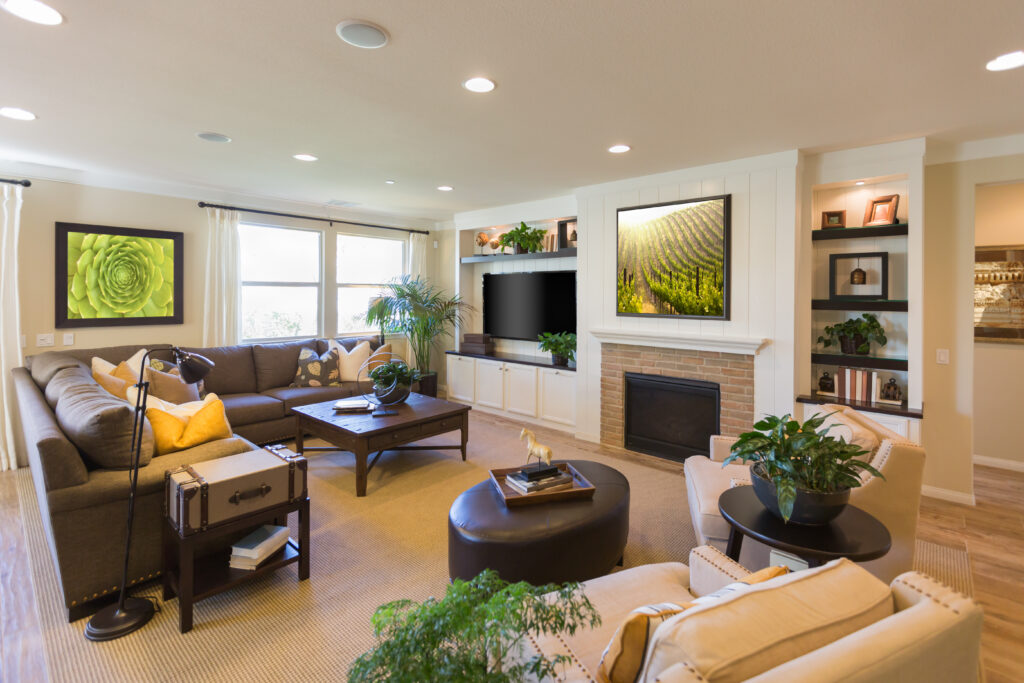The living room is often considered the heart of the home, a versatile space where life unfolds. It’s where families gather for movie nights, friends are welcomed for casual get-togethers, and quiet moments of relaxation are enjoyed. As one of the most frequently used areas in the house, it plays a dual role: offering comfort and making a lasting impression on anyone who steps inside.
Your living room isn’t just about functionality—it’s also a reflection of your personal style and the atmosphere you want to create. Whether it’s a cozy retreat with soft lighting and warm tones or a vibrant, eclectic haven filled with bold colors and patterns, your living room sets the tone for the rest of your home.
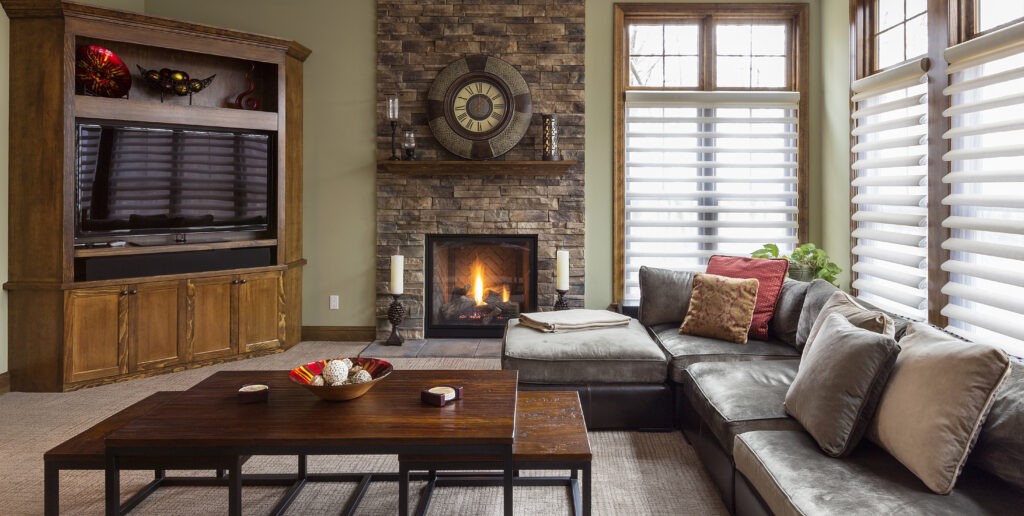
Living Room Design Fundamentals
Creating a functional and stylish living room requires thoughtful attention to design elements that enhance both the practicality and visual appeal of the space. From the arrangement of furniture to the choice of colors, textures, and materials, each decision contributes to the overall ambiance and usability of the room.
Layout and Furniture Placement
The layout of your living room serves as the foundation of its design. Arranging furniture around a focal point, such as a fireplace, a large window, or a TV, helps establish a natural flow and encourages interaction. For larger spaces, consider creating distinct zones for different purposes, such as a reading nook or an entertainment area.
In small living rooms, space optimization becomes critical. Use multi-functional furniture like ottomans with hidden storage or foldable tables to maintain practicality without overcrowding. Floating shelves and wall-mounted units can help clear floor space and keep the room open and airy.
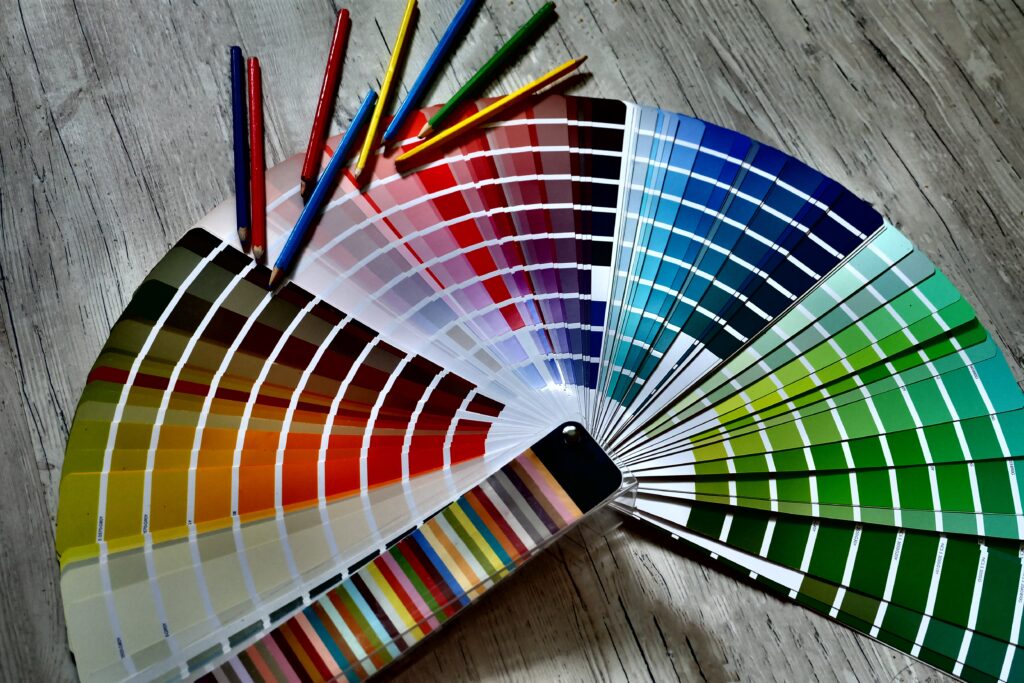
Choosing the Right Color Palette
Colors are a powerful tool in living room design, setting the mood and defining the personality of the space. Neutral palettes, such as whites, beiges, and grays, create a serene and timeless atmosphere, making them a popular choice for versatile designs. Bold colors like deep blues or rich emerald greens can add vibrancy and drama to the room, while monochromatic schemes offer a sleek and contemporary look. The right choice of color not only enhances visual appeal but also influences the perception of space. Light shades can make a small room feel larger and more open, while darker tones add coziness and sophistication.
Incorporating Textures and Materials
Adding layers of texture and mixing materials is essential for creating a dynamic and inviting living room. Combining wood, metal, and fabric elements provides visual contrast and depth. A soft area rug underfoot, paired with plush cushions and draped throws, brings warmth and comfort. Curtains in linen or velvet add elegance and tie the room together, while natural materials like rattan and jute introduce a touch of organic charm. Thoughtful use of textures and materials transforms a simple room into a welcoming sanctuary.
Living Room Styles and Themes
Choosing a specific style or theme for your living room sets the foundation for its overall ambiance and design. From sleek modern aesthetics to cozy and rustic farmhouse vibes, the style you select should reflect your personality and complement the rest of your home. Let’s explore some popular living room styles and themes to inspire your creativity.
Modern Minimalist Living Rooms
Modern minimalism is all about simplicity, functionality, and elegance. In this design approach, less truly is more. Clean lines, neutral tones, and uncluttered arrangements take center stage. Furniture with streamlined silhouettes, such as a sleek leather sofa or a glass-topped coffee table with metal framing, helps create a contemporary look that is both practical and stylish.
The color palette typically revolves around whites, blacks, and grays, sometimes accented with a single bold color for visual interest. Minimalist decor emphasizes quality over quantity, so every piece should have a purpose, ensuring the space feels open and uncluttered while maintaining a polished aesthetic.
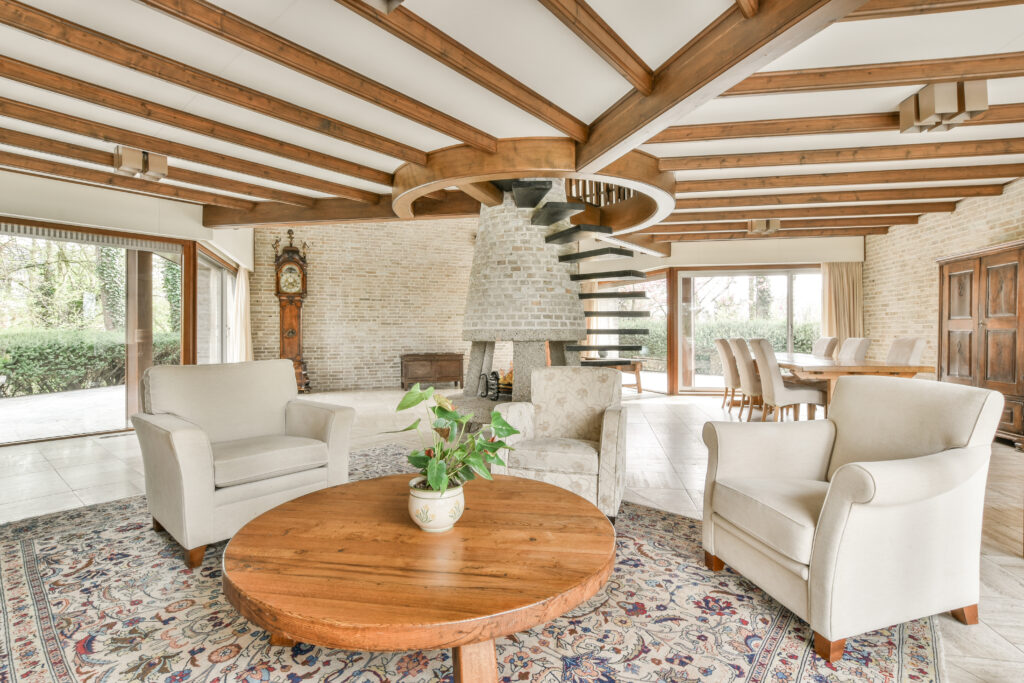
Cozy Farmhouse Aesthetics
For those who value warmth and comfort, the farmhouse style is the perfect choice. This design exudes rustic charm with its emphasis on natural materials, vintage-inspired furniture, and soft, neutral color palettes. Think exposed wooden beams, distressed finishes, and classic patterns like gingham or plaid.
Lighting plays a crucial role in creating the cozy atmosphere of a farmhouse living room. Warm, ambient lighting from lantern-style fixtures or Edison bulb chandeliers can evoke a sense of nostalgia and serenity. Layered textiles such as chunky knit throws, linen curtains, and woven rugs complete the look, making the space inviting and homely.
Bold and Eclectic Themes
An eclectic style is a playground for creativity and self-expression, ideal for those who love variety and bold design choices. This theme celebrates the mix-and-match approach, combining vibrant patterns, diverse textures, and a medley of colors to craft a visually exciting space. For example, a modern geometric rug can pair beautifully with vintage furniture, while an abstract art piece provides a focal point on the wall. Eclectic living rooms often feature curated decor items from different cultures or time periods, giving the room a unique, personal touch. The key to nailing this look is to maintain balance amid the variety—use a cohesive color palette or repeating materials to tie everything together.
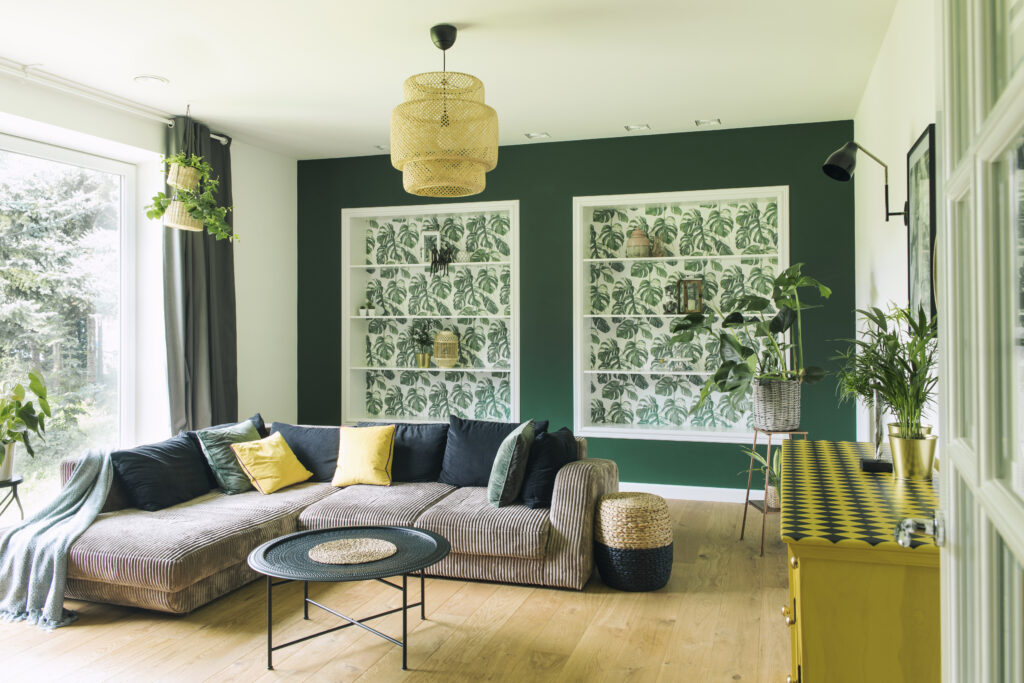
Nature-Inspired Designs
Nature-inspired living rooms bring the tranquility of the outdoors into your home. By incorporating earthy tones like forest green, sandy beige, and rich browns, you can create a soothing and grounded atmosphere. Lush greenery, whether in the form of potted plants, hanging vines, or floral arrangements, breathes life into the room.
Natural wood furniture, rattan chairs, and stone accents further enhance the organic feel of the space. Textures like jute rugs and linen curtains add a rustic touch, while large windows or mirrors help maximize natural light, emphasizing the connection to the outdoors. This style fosters a sense of calm and well-being, making it an excellent choice for relaxation.
Each of these styles offers a distinct way to decorate your living room. Whether you prefer the sleek appeal of modern minimalism, the comforting charm of a farmhouse aesthetic, the adventurous mix of eclectic design, or the serene vibe of nature-inspired themes, there’s something to suit every taste and lifestyle.
Small Living Room Ideas
Designing a small living room requires creativity and thoughtful planning to maximize the space without sacrificing style or functionality. With the right approach, even the coziest rooms can feel open, inviting, and perfectly suited for relaxation or entertaining. Here are some effective strategies to transform your small living room into a stunning space.
Vertical Decor Concepts
When floor space is limited, utilizing vertical space is key to creating a sense of openness. Drawing the eye upward can make a room feel taller and more spacious. Floating shelves are an excellent way to display books, plants, or decor without taking up valuable floor area.
Tall, slim bookshelves not only provide additional storage but also add architectural interest to the room. Oversized art pieces or gallery walls featuring a mix of frames and sizes can act as a focal point, enhancing the visual height of the space. Ceiling-mounted curtains that extend from floor to ceiling also add to the vertical illusion, creating an elegant and airy effect.
Multi-Functional Furniture
In a small living room, every piece of furniture needs to work harder. Multi-functional furniture is a game-changer for compact spaces. Ottomans with hidden storage can double as extra seating or a coffee table while providing a place to tuck away blankets or books. Sofa beds are perfect for accommodating overnight guests without the need for a separate guest room. Nesting tables are another smart choice, offering flexibility when needed and minimizing clutter when not in use. Modular furniture, such as sectionals that can be rearranged, allows you to adapt the layout to suit various needs and occasions.
Lighting Techniques
Lighting can dramatically alter the perception of space in a small living room. Maximize natural light by using sheer curtains or forgoing window treatments altogether to let sunlight pour in. Mirrors are another powerful tool; strategically placing a large mirror opposite a window reflects light throughout the room, making it feel brighter and more expansive.
Layered lighting, including wall sconces, floor lamps, and pendant lights, can create depth and warmth without overwhelming the space. Choose light fixtures that are visually lightweight, such as those with slim profiles or glass shades, to keep the room from feeling cramped.
By combining these design strategies, you can transform your small living room into a functional and stylish haven. With careful attention to detail and a focus on maximizing space, even the smallest room can make a big impression.
Accessorizing Your Living Room
Accessories are the finishing touches that elevate a living room from functional to fabulous. They add personality, style, and warmth, turning your space into a reflection of your taste and creativity. Thoughtfully chosen accessories not only enhance the aesthetic appeal but also make your living room more inviting and comfortable. Here’s how to make the most of them.
Statement Pieces
A striking statement piece can serve as the centerpiece of your living room, instantly drawing attention and anchoring the design. This could be an oversized piece of art that introduces bold colors or an intricate pattern, creating a gallery-like focal point. Alternatively, a unique coffee table with a sculptural design or an eye-catching material like marble or wood can become a conversation starter.
A standout sofa in a vibrant color or with a distinctive texture can also serve as a centerpiece, setting the tone for the rest of the decor. When incorporating statement pieces, balance is key—let them shine by keeping surrounding decor simpler and complementary.
Layered Lighting
Lighting is one of the most versatile tools for accessorizing your living room. By combining different types of lighting, you can create a layered effect that adds depth, enhances functionality, and sets the mood. Floor lamps positioned near seating areas offer focused light for reading, while wall sconces provide ambient lighting and save space. Table lamps add a cozy glow and can double as decorative elements when paired with stylish shades or bases. Incorporating dimmer switches or smart bulbs allows you to adjust the brightness to suit various occasions, from casual evenings to lively gatherings. With the right lighting mix, your living room will feel dynamic and welcoming.
Seasonal Decor Swaps
Keeping your living room fresh and current throughout the year doesn’t require a full makeover. Seasonal decor swaps are an easy and cost-effective way to refresh the space. In summer, opt for bright, airy elements like colorful cushions, lightweight throws, and floral arrangements to bring a cheerful vibe.
During the colder months, switch to warm, cozy textures like chunky knit blankets, velvet pillows, and rich, earthy tones to create a snug retreat. Holiday-specific touches, such as twinkling string lights or thematic ornaments, can further enhance the seasonal ambiance. This simple strategy keeps your living room feeling renewed and adaptable, no matter the time of year.
Accessorizing your living room is all about expressing your personal style while enhancing functionality and comfort. By thoughtfully selecting statement pieces, layering lighting, and incorporating seasonal updates, you can transform your living room into a space that feels both stylish and uniquely yours.
Conclusion
Transforming your living room into a space that perfectly balances style and functionality doesn’t have to be overwhelming. With a thoughtful approach to layout, a well-chosen color palette, and creative accessorizing, you can design a room that feels uniquely yours. Your living room serves as the heart of your home, where memories are made, conversations flow, and relaxation takes center stage. It should reflect your personality while meeting the practical needs of your household.
Whether your style leans toward the sleek simplicity of modern minimalism, the inviting warmth of a cozy farmhouse aesthetic, the adventurous mix of bold eclectic decor, or the serene charm of nature-inspired designs, there’s a wealth of inspiration to draw from. Don’t be afraid to experiment and make bold choices—whether it’s incorporating a statement piece, playing with textures, or layering lighting to set the mood.
The key to a successful transformation lies in making the space work for you. Small living rooms can feel expansive with clever use of vertical decor and multi-functional furniture, while larger spaces benefit from well-defined zones that serve different purposes. Seasonal updates, like switching out accessories or experimenting with trendy colors, can keep your living room feeling fresh and new throughout the year.
Your dream living room is within reach, whether you’re planning a complete makeover or just looking to refresh its vibe. Take inspiration from these ideas, adapt them to suit your taste and space, and watch your living room evolve into a beautiful, functional haven that you and your loved ones will enjoy for years to come. Now’s the time to start—let your creativity lead the way!
Frequently Asked Questions (FAQ)
What are the best paint colors for a small living room?
Light and neutral shades like white, beige, or pastel hues help make small spaces feel larger and brighter.
How do I decorate a living room on a budget?
Focus on affordable updates like repainting walls, rearranging furniture, and adding DIY decor pieces. Thrift stores can be a treasure trove for unique and budget-friendly finds.
What furniture works best in a small space?
Choose multi-functional furniture, such as foldable tables or compact sectional sofas. Avoid oversized pieces that can overwhelm the room.
How do I make my living room cozy and inviting?
Incorporate plush textures, warm lighting, and personal touches like framed photos or heirloom pieces. A cozy area rug can also tie the room together.
What are the current trends in living room design?
Popular trends include nature-inspired designs, bold statement walls, and the use of sustainable materials like bamboo and reclaimed wood.
